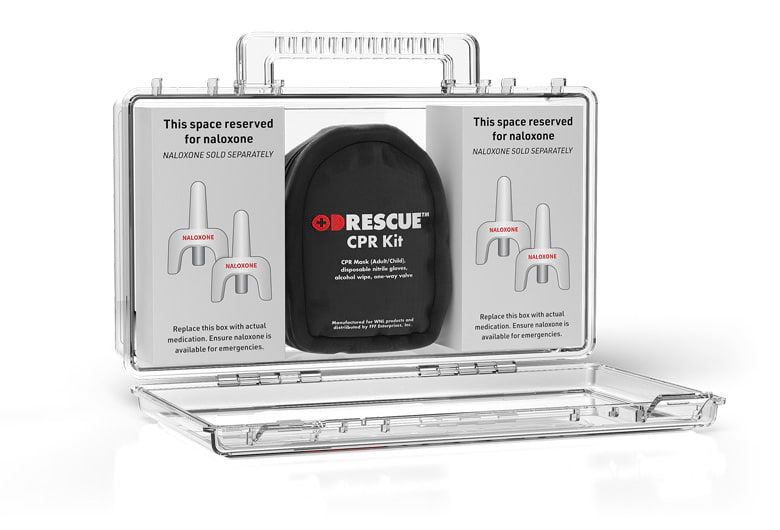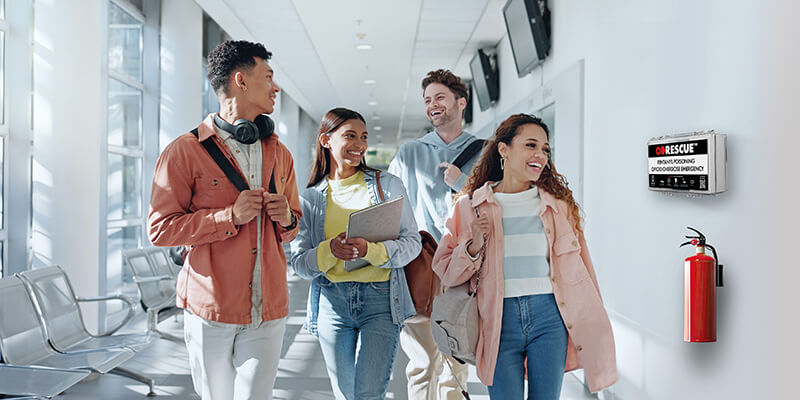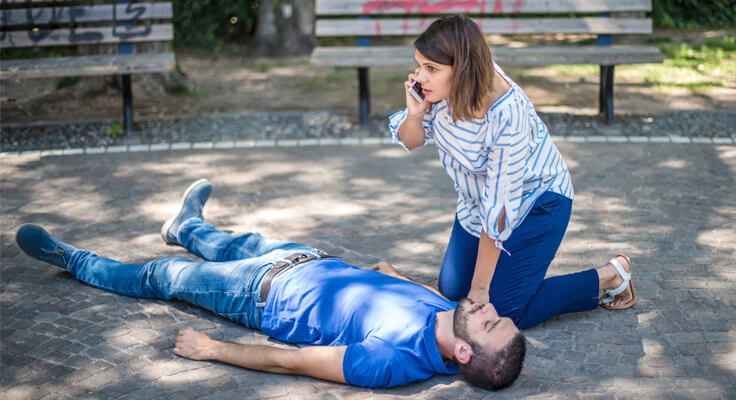As a registered nurse for over 30 years, Mia Hunter’s passion for preventing overdose fatalities is both professional and personal.
From surgical intensive care and labor and delivery to organ donation and emergency rooms, Hunter has seen her fair share of medical emergencies.
However, when her grandmother died from multi-system organ failure due to an accidental overdose in a Pampa, Texas, hospital, Hunter realized more needed to be done about spotting and reversing opioid overdoses.
“That was nurses who were supposed to [administer naloxone] and didn’t do that,” Hunter said. “So it’s really close to my heart.”
(*The following content is for general educational purposes only and is not a substitute for medical advice or emergency medical training. Always consult a healthcare professional and follow product labeling.)
An Advocate for Overdose Education and the Life-Saving ODRescue™ Box
Hunter is based in Amarillo, Texas, and spent most of her career working in the Texas Panhandle. Currently, she is the executive director of the Community Awareness Rural Education Team (C.A.R.E.), which is dedicated to educating organizations about overdoses and to distributing Narcan®.
Hunter speaks to many different groups to educate everyone on spotting overdoses and knowing how to intervene to save lives. She often brings an ODRescue™ Box — a transparent plexiglass box equipped with a place for four naloxone doses as well as a CPR kit with an adult/child mask, nitrile gloves and antiseptic wipe — to explain why it’s important to be prepared for an overdose in any situation, whether it’s outside of a bar or inside a classroom.

“What I tell a lot of the teachers and a lot of parents that I talk to: I know you think your kid is a good kid — and they probably are — but they’re always going to have temptations,” Hunter said.
She said parents are often convinced that their children aren’t the type to be trying drugs, but Hunter says peer pressure is at a heightened level now more than ever.
She stresses that even if your child will never be involved in an overdose situation, a friend of theirs might. That friend or a teammate might be in your car on the way to soccer practice.
“Carry [naloxone] for that friend,” Hunter said. “I just tell people that we all have to work together on this. We have to have the tools we need and the education. People are going to die if we just sit there and watch them.”
Hunter said that anyone can be the capable bystander who recognizes an emergency and provides the necessary help. “You just never know,” Hunter emphasized. “Everybody needs to have the knowledge of how to use naloxone.”
Do You Know How to Administer Naloxone?
Maybe you’re on a run in your local park. Perhaps you’ve stopped at the grocery store and someone is lying unresponsive on the sidewalk. They might be exhibiting overdose symptoms, like:
- being unresponsive to touch or noise,
- displaying slow or even absent breathing,
- making choking or gurgling noises,
- and having tiny pupils, clammy skin and/or lips and nails that are blue.
What do you do now?
The Narcan® website provides instructions on how to administer their product.
Narcan® says to remember “Lay, Spray, Stay.”
- Lay: Check for slowed breathing or unresponsiveness. Lay the person on their back and tilt the head up.
- Spray: Insert device into either nostril and press plunger firmly.
- Stay: Call 911 immediately after giving the first dose. Continue to administer doses every 2-3 minutes and wait with the person until help arrives. Use as directed. 1 nasal spray device contains 1 dose. Safe to keep giving doses as needed.
(*Always consult the product’s Prescribing Information and seek emergency medical assistance immediately in the event of a suspected overdose. This is not a substitute for medical advice.)
Additional Overdose Emergency Tips from Registered Nurse Mia Hunter
(*The following tips are shared by Mia Hunter, RN, based on her personal experience and training. These are not meant to replace formal CPR/first aid training. Always seek appropriate medical guidance and follow manufacturer instructions.)
Hunter suggests additional actions you can take when encountering a suspected overdose.
- She advises checking for a pulse on their wrist. Hunter’s helpful tip: Follow the “C” on the inside of their hand around their thumb down to the top of their wrist.
- If there is no pulse, start chest compressions. Only apply compressions if you know for certain that their heart has stopped.
- If there is a pulse, do not do compressions. Administer rescue breaths only.
- She notes that Narcan® nasal spray does not have a cap. The spray is ready to use once you remove it from its package. Merely push on the bottom to administer.
- If the overdosing individual doesn’t immediately regain consciousness after the first nasal spray dose, she recommends that you try to wake them by shaking, talking to them, or doing a sternal rub, which is rubbing your knuckles firmly in the middle of their chest/sternum to elicit a pain response.
- Hunter said the overdosing individual may throw up after receiving naloxone. If so, place the person on their left side, whichexpands the lungs for better circulatory response. They can be placed on their right side as well.
- Once someone does become alert, Hunter said she likes to tell them where they are and that you gave them medicine. Educate the individual about what happened and what you did.
- Hunter said sometimes the person can be disoriented or agitated. They may even become physical. She suggests bystanders be prepared for a combative person.
- She notes that it does not hurt someone to administer naloxone if their medical emergency is unrelated to an opioid overdose, which the Centers for Disease Control and Prevention (CDC) confirms. It can safely be given to all ages.
- She recommends wearing gloves, if possible, especially in case the overdosing person throws up.
(*Administration instructions provided here are for general educational purposes and are not a substitute for medical advice or the full FDA-approved labeling for these products. Always follow the product’s labeling and seek immediate medical assistance in the event of a suspected overdose.)
Fentanyl Overdose Slowdown? Hunter is Skeptical
According to the CDC, US drug overdoses declined 24 percent in a 12-month period ending in September 2024. There were 87,000 drug overdose deaths from October 2023 to September 2024, which was down from 114,000 deaths the previous year. Data shows 45 states had declines in overdose deaths; however, five states (i.e., Alaska, Montana, Nevada, South Dakota and Utah) saw increases.
Fewer overdose emergencies haven’t been Hunter’s recent experience. In March this year, she said she administered Narcan® twice in the last six months just by coming upon someone in the field.
She also said many of the statistics don’t account for the people who barely survived an overdose and end up in nursing homes, incapacitated or eventually pass away due to the event.
According to some estimates, for every drug overdose death, there are up to 5 times as many who survive an overdose with significant brain impact.
Hunter also doesn’t like the overall number of annual deaths, which remains too high despite decreasing numbers. The CDC states that overdose is still the leading cause of death for Americans between the ages of 18 and 44. “I just feel like there’s still a big problem with it,” she said. “We don’t have [Narcan®] in enough places. I think it’s key for us to keep pushing.”
More Can Be Done
While it’s important to call 911 in an overdose emergency — since the individual will need further care at a hospital following Narcan® administration — it’s vital to act in the seconds and minutes following an overdose.
Acting in those minutes before EMS arrives can mean the difference between life or death.
“This is somebody’s child. You can’t just not do anything,” Hunter said. “We’ve got to do better [as a society]. We’ve got to help regardless.”

Hunter hopes all schools start carrying ODRescue™ Boxes. She especially likes the ODRescue™ Alert functionality, which will automatically notify designated first responders in the area to help in an overdose emergency. The alert acts as an additional layer of response to calling 911.
“I just think it’s a fantastic idea,” she said.
(*The inclusion of product information is for reference only. FFF Enterprises does not provide medical advice. Always refer to the Prescribing Information for full usage instructions, indications, and safety information for naloxone products.)
